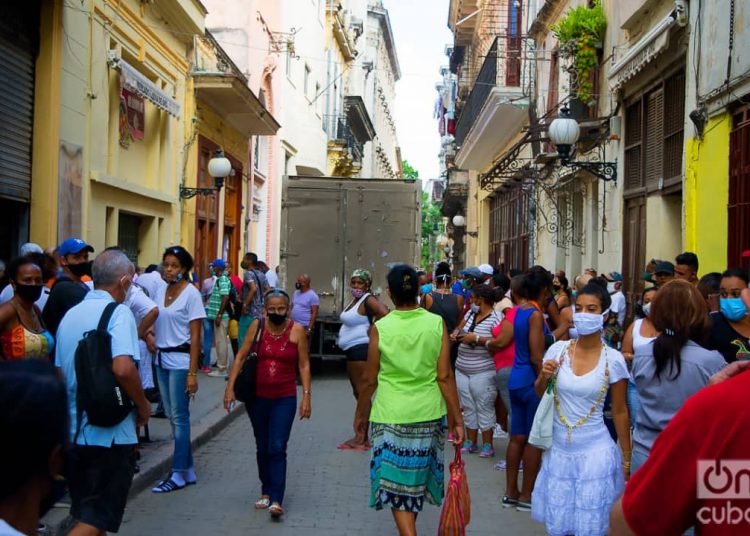The daily infections from the SARS-CoV-2 virus in Cuba have again broken the records with the diagnosis yesterday of 487 cases distributed in almost all the country’s provinces, although Havana accounts for 40% of the positive cases reported by the Ministry of Health Public (MINSAP).
Just the capital registered 195 people diagnosed with an autochthonous or imported source of infection, according to the MINSAP, which warned of the no less worrying situation in provinces such as Matanzas (66 cases), Santiago de Cuba (44), Holguín (39) and Guantanamo (26).
Se confirmaron 487 nuevos casos de #COVID19, para un acumulado de 15 494
3057 casos activos
3032 con evolución clínica estable
8 pacientes en estado crítico
17 pacientes en estado grave
155 fallecidos (2 del día)
12252 pacientes recuperados
2 evacuadoshttps://t.co/Zht4VE1gcl pic.twitter.com/Ea8fpBST1V— Ministerio de Salud Pública de Cuba (@MINSAPCuba) January 12, 2021
The highest incidence rate, however, is in the eastern province of Guantánamo, with 70.66 per 100,000 inhabitants. Matanzas, Havana and Santiago de Cuba follow in complexity. Meanwhile, the country’s incidence rate is 26.6.
The confirmed active patients have also broken records with the 3,057 reported as of midnight on Monday, with more than 6,000 people were admitted to hospitals or specialized centers for the care of COVID-19 patients.
There were 25 people in ICUs, eight in critical condition and 17 in serious condition.
To top it off, two individuals died and the death toll is now 155, leaving the island with a fatality rate of 1%, a low percentage compared to those in the Americas or the world, but “unsatisfactory” for the island’s health authorities, as Dr. Francisco Durán has confessed.
The most recent victims were a 57-year-old woman, resident in the Boyeros municipality of Havana, and an 89-year-old man, resident in the Santiago de Cuba municipality. Both suffered from diseases that complicated their treatment, Durán explained during the press conference.
Of the total number of infections today, in 37 individuals the source of infection is not specified, 44 had the source of infection abroad and 443 correspond to autochthonous transmission, a trend that has been increasing in January to reach current levels, and which, as the national director of Epidemiology has explained, is related to the decrease in international flights.
In fact, 35% of the 443 autochthonous cases are linked to imported infections; meanwhile, 250 are related to contacts of confirmed cases.
The countries with an incidence on imported infections are still led by the United States, followed today by Germany, Colombia, Canada, Spain and Venezuela.
Another important piece of information provided by the MINSAP is that 308 patients (63.2%) were asymptomatic, underlining the complexity of a disease from which, to date, 12,252 people have recovered on the island after yesterday’s 230 discharges.










